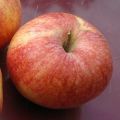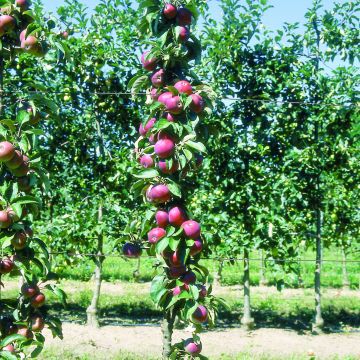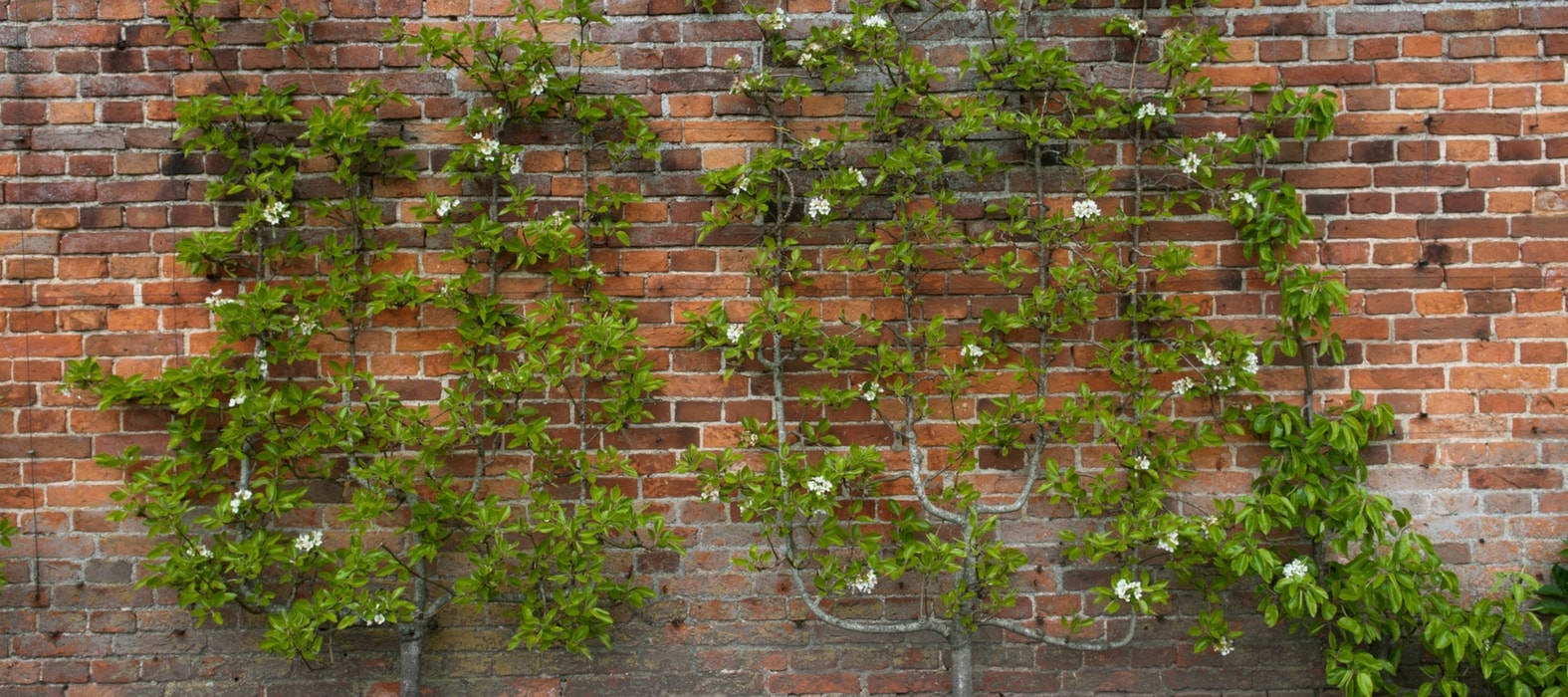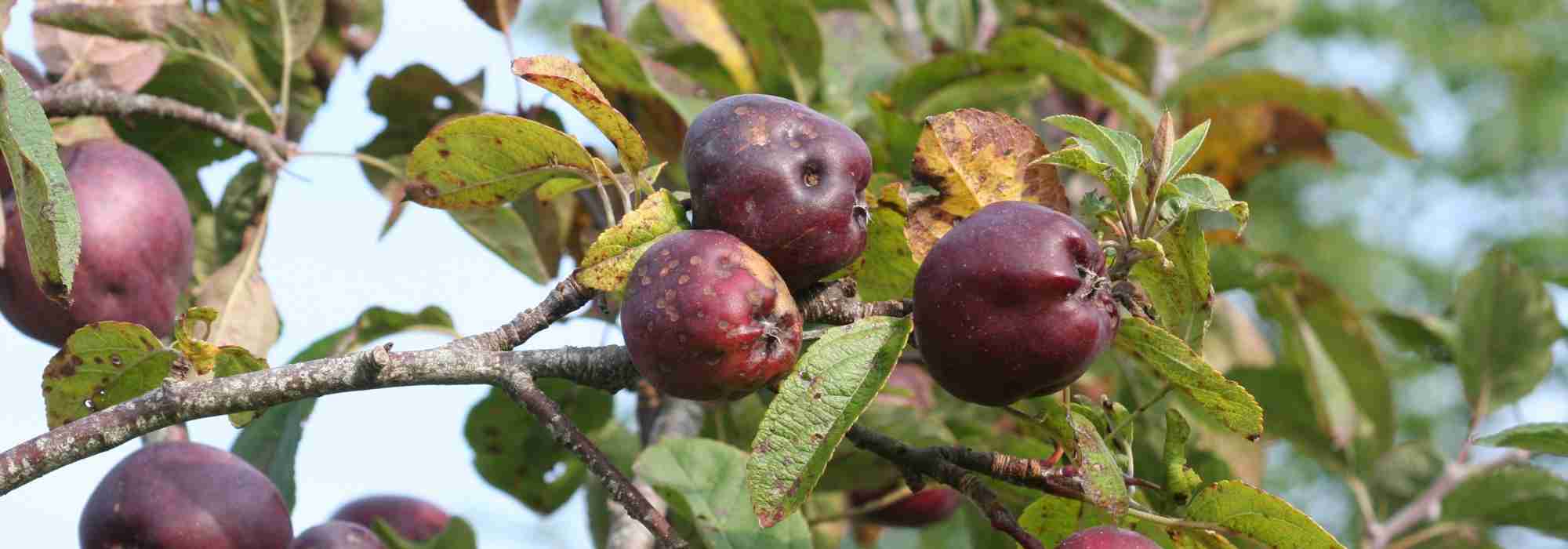

Single U-shaped palmate apple pollinator duo
Single U-shaped palmate apple pollinator duo
Malus domestica Reine des Reinettes, Belle de Boskoop
Special offer!
Receive a €20 voucher for any order over €90 (excluding delivery costs, credit notes, and plastic-free options)!
1- Add your favorite plants to your cart.
2- Once you have reached €90, confirm your order (you can even choose the delivery date!).
3- As soon as your order is shipped, you will receive an email containing your voucher code, valid for 3 months (90 days).
Your voucher is unique and can only be used once, for any order with a minimum value of €20, excluding delivery costs.
Can be combined with other current offers, non-divisible and non-refundable.
Home or relay delivery (depending on size and destination)
Schedule delivery date,
and select date in basket
This plant carries a 6 months recovery warranty
More information
We guarantee the quality of our plants for a full growing cycle, and will replace at our expense any plant that fails to recover under normal climatic and planting conditions.
Collection items (2 plants)
Description
This Duo pollinator of apple trees in single U espalier brings together the varieties 'Queen of the Pippins' and 'Beauty of Boskoop', which produce excellent cooking apples appreciated for making pies, fritters, clafoutis and other baked apples. Planted in the same garden, these two apple trees that flower together in spring pollinate each other, guaranteeing a abundant and extended harvest, from early September to late November. Apple trees are preferably planted in autumn.
This duo consists of:
- x1 Apple tree 'Beauty of Boskoop': a variety with good vigor and productivity. It produces large, irregular round fruits, light green to yellow with red spots. Their flesh is granular, semi-crisp, juicy and tart. The harvest takes place in late October and November. They can be stored until March. This apple tree is resistant to canker, scab, and cold.
- x1 'Queen of the Pippins' apple tree: a vigorous and productive variety, very resistant to cold and diseases. Highly appreciated in pastry, it is thanks to its deliciously tart and fragrant apple that the famous Tarte Tatin owes its success. Its fruits, about 7 cm (3in) in diameter, are covered with a red-yellow golden skin. Their flesh is pale, juicy, fine and crisp, both sweet and tart, with a slight walnut taste that makes it irresistible. The harvest begins at the beginning of ripeness, in early September, and lasts until October. The Queen of the Pippins stores very well after harvest and can be consumed throughout the winter, until March. It will be necessary to thin it out to avoid small fruit size and the occurrence of diseases. This apple tree is an excellent pollinator.
Individually labeled
The apple tree is a native tree in Europe, especially in France where its presence has been attested since antiquity. It is a tree with a semi-erect, elegant habit. Its deciduous foliage falls in autumn. It is composed of very large, ovate leaves, slightly hairy and greenish-brown on top, whitish-green underneath, deeply toothed. Flowering occurs in April, it is not afraid of frost. The apple tree is therefore suitable for cultivation in mountain areas.
Culinary aspect:
'Queen of the Pippins' and 'Beauty of Boskoop' apples can of course be eaten as they are, but they are particularly appreciated in desserts and pastries. You can also use them in savory dishes (with black pudding, red cabbage or sausages), or in combination with Normandy cheeses, for example.
Fruit trees formed in single U espalier are trained on wire lines, they have a short trunk with two branches forming a U in the same plane, a bit like a candelabra. They have the advantage of taking up little space in thickness, but they are quite long to train: allow 5 years. The planting distance between two plants is 3.50 m (11ft).
Plant habit
Fruit
Flowering
Foliage
Botanical data
Malus
domestica
Reine des Reinettes, Belle de Boskoop
Rosaceae
Cultivar or hybrid
Other Apple trees
View all →Planting and care
Choose a sunny location for your Apple tree, the soil can be slightly chalky or acidic but not excessively. Dig a large planting hole at least 3 times the volume of the root ball. Simultaneously add organic matter (topsoil, compost) and a base fertilizer such as crushed horn. Do not bury the graft collar. Stake if necessary. Water abundantly, even in winter, even if it rains. Fruit trees are ideally planted between October and March, outside of freezing periods. Container-grown plants can be planted all year round except during periods of high heat or frost.
You can apply a small handful of wood ash, rich in potash, during the winter to improve fruiting. Watch out for possible aphid attacks during the season. A white powdery mildew caused by a fungus, powdery mildew, may appear on the leaves in summer, but it does not harm fruit development in gardens. Harvest takes place in September. Only keep harvested fruits. Store apples with the stem facing downwards, on racks or in crates. Choose a preferably completely dark, dry and cool place, but frost-free.
Planting period
Intended location
Care
Planting & care advice
This item has not been reviewed yet - be the first to leave a review about it.
Similar products
Haven't found what you were looking for?
Hardiness is the lowest winter temperature a plant can endure without suffering serious damage or even dying. However, hardiness is affected by location (a sheltered area, such as a patio), protection (winter cover) and soil type (hardiness is improved by well-drained soil).

Photo Sharing Terms & Conditions
In order to encourage gardeners to interact and share their experiences, Promesse de fleurs offers various media enabling content to be uploaded onto its Site - in particular via the ‘Photo sharing’ module.
The User agrees to refrain from:
- Posting any content that is illegal, prejudicial, insulting, racist, inciteful to hatred, revisionist, contrary to public decency, that infringes on privacy or on the privacy rights of third parties, in particular the publicity rights of persons and goods, intellectual property rights, or the right to privacy.
- Submitting content on behalf of a third party;
- Impersonate the identity of a third party and/or publish any personal information about a third party;
In general, the User undertakes to refrain from any unethical behaviour.
All Content (in particular text, comments, files, images, photos, videos, creative works, etc.), which may be subject to property or intellectual property rights, image or other private rights, shall remain the property of the User, subject to the limited rights granted by the terms of the licence granted by Promesse de fleurs as stated below. Users are at liberty to publish or not to publish such Content on the Site, notably via the ‘Photo Sharing’ facility, and accept that this Content shall be made public and freely accessible, notably on the Internet.
Users further acknowledge, undertake to have ,and guarantee that they hold all necessary rights and permissions to publish such material on the Site, in particular with regard to the legislation in force pertaining to any privacy, property, intellectual property, image, or contractual rights, or rights of any other nature. By publishing such Content on the Site, Users acknowledge accepting full liability as publishers of the Content within the meaning of the law, and grant Promesse de fleurs, free of charge, an inclusive, worldwide licence for the said Content for the entire duration of its publication, including all reproduction, representation, up/downloading, displaying, performing, transmission, and storage rights.
Users also grant permission for their name to be linked to the Content and accept that this link may not always be made available.
By engaging in posting material, Users consent to their Content becoming automatically accessible on the Internet, in particular on other sites and/or blogs and/or web pages of the Promesse de fleurs site, including in particular social pages and the Promesse de fleurs catalogue.
Users may secure the removal of entrusted content free of charge by issuing a simple request via our contact form.
The flowering period indicated on our website applies to countries and regions located in USDA zone 8 (France, the United Kingdom, Ireland, the Netherlands, etc.)
It will vary according to where you live:
- In zones 9 to 10 (Italy, Spain, Greece, etc.), flowering will occur about 2 to 4 weeks earlier.
- In zones 6 to 7 (Germany, Poland, Slovenia, and lower mountainous regions), flowering will be delayed by 2 to 3 weeks.
- In zone 5 (Central Europe, Scandinavia), blooming will be delayed by 3 to 5 weeks.
In temperate climates, pruning of spring-flowering shrubs (forsythia, spireas, etc.) should be done just after flowering.
Pruning of summer-flowering shrubs (Indian Lilac, Perovskia, etc.) can be done in winter or spring.
In cold regions as well as with frost-sensitive plants, avoid pruning too early when severe frosts may still occur.
The planting period indicated on our website applies to countries and regions located in USDA zone 8 (France, United Kingdom, Ireland, Netherlands).
It will vary according to where you live:
- In Mediterranean zones (Marseille, Madrid, Milan, etc.), autumn and winter are the best planting periods.
- In continental zones (Strasbourg, Munich, Vienna, etc.), delay planting by 2 to 3 weeks in spring and bring it forward by 2 to 4 weeks in autumn.
- In mountainous regions (the Alps, Pyrenees, Carpathians, etc.), it is best to plant in late spring (May-June) or late summer (August-September).
The harvesting period indicated on our website applies to countries and regions in USDA zone 8 (France, England, Ireland, the Netherlands).
In colder areas (Scandinavia, Poland, Austria...) fruit and vegetable harvests are likely to be delayed by 3-4 weeks.
In warmer areas (Italy, Spain, Greece, etc.), harvesting will probably take place earlier, depending on weather conditions.
The sowing periods indicated on our website apply to countries and regions within USDA Zone 8 (France, UK, Ireland, Netherlands).
In colder areas (Scandinavia, Poland, Austria...), delay any outdoor sowing by 3-4 weeks, or sow under glass.
In warmer climes (Italy, Spain, Greece, etc.), bring outdoor sowing forward by a few weeks.



























































